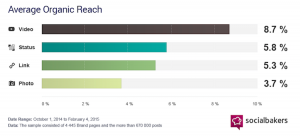Our world has dramatically and swiftly shifted to remote work, leaving many companies scrambling to adapt. Remote work isn’t just a trend, it’s the new reality.
Remote work can lead to improved productivity, but it also comes with unique challenges that organizations need to address to stay at the top of their game. It’s easy to let communication, recognition, effective onboarding, and professional development slip. Managers default to micromanagement, causing distrust among their employees.
The good news is that businesses can overcome these challenges with proven tactics that help remote employees collaborate and stay engaged.
11 ways to engage remote employees
Remote work is here to stay. Finding ways to raise morale, respond to changes nimbly, and foster engagement is the key to maintaining a winning culture with a remote workforce. Follow these 11 strategies to keep your employees motivated, productive, and connected.
1. Give your remote employees a real voice in your organization
Remote employees want their voices heard, no matter where they are. Employees who are able to express what they truly feel — and then see the organization take action on that feedback — are motivated to contribute as much as they can to their company’s success. Salesforce Research found that when an employee feels heard, that person is 4.6 times more likely to feel empowered to perform to the best of their abilities.
Give your remote workforce opportunities to exercise their voice with recurring employee engagement surveys. Pulse surveys can help gauge reception to particular topics over time, while always-on feedback channels enable employees to give feedback about anything in real-time. Implementing both strategies gives you a holistic picture of how your workforce is feeling. And with an employee engagement platform, all the data you collect is easy for managers to review, analyze, and act on.
HR plays an important role in helping managers act on feedback from remote employees. They encourage and teach managers how to develop collaborative action plans together with their employees. When managers receive survey results, they should host listening sessions where team members can provide input and share how they would respond to surfaced issues. This listening session should be a safe space where employees feel comfortable sharing honest thoughts on problems and the steps required to address them. This joint effort establishes trust among managers and their direct reports, and helps both parties feel invested in putting the action plan into practice.
2. Show remote employees they’re appreciated
Practicing employee recognition is a critical part of engaging remote workers. Professionals often suffer from imposter syndrome, and working remotely can exacerbate feelings of inadequacy. Showing appreciation frequently is the key to a confident, high-performing workforce.
Both social and monetary recognition are effective ways to combat negative feelings. In fact, social recognition may be even more effective than monetary recognition at boosting engagement and retention rates. Social recognition can lead to a 55% increase in engagement. And it plays a heavy role in reducing turnover. After all, who would want to leave an organization that actually recognizes your achievements? Social recognition even has the potential to dramatically strengthen NPS scores, overall employee performance, and even stock prices.
When it comes to monetary recognition, points-based reward systems let your remote workforce choose rewards that actually matter to them. As employees’ points balances rise, they become more inspired and motivated to perform their best. To encourage adoption, let employees “boost” their peers’ recognitions, awarding the recipient extra points.
How can you enable these best practices? Adopt an employee recognition platform that’s easy for remote employees to incorporate into their daily workflows. That means it needs an intuitive user interface, a mobile-first design philosophy, and support for points-based rewards. It should also integrate with your engagement platform and communication tools like Microsoft Teams and Slack so it fits seamlessly into employees’ routines.
3. Keep remote employees connected with tools for communication and collaboration
Working remotely can make employees feel lonely and disconnected. To prevent this, establish a framework for frequent, structured communication between peers and among managers and their direct reports. Regular scheduled check-ins promote social interaction and help teams stay aligned. Don’t go overboard, though. It’s easy to disrupt someone’s workflow with an ad hoc call or fall into the micromanagement trap.
Once you’ve settled on a good meeting cadence, explore tools to facilitate better communication and teamwork. Video call platforms like Google Meet and Zoom can make your virtual work environment more collaborative, as can chat tools like Slack and Google Chat. Platforms like these make it easy to keep remote employees involved in company decisions and discussions and provide them with as much responsibility as in-office employees. Project management software is also a good investment, as it increases visibility and makes working together easier. Overall, pick tools that are easy to use ? steep learning curves will discourage your remote employees from using new technology.
4. Don’t let professional development fall on the backburner
It’s easy for things to slip when switching to remote work, but professional development shouldn’t be one of them. Supporting continuous learning and development is a win-win. Employees gain invaluable skills while employers grow, develop, and retain top talent.
Investing in a learning management system (LMS) that’s accessible from anywhere is a good start. LMS software enables HR teams to purchase and upload training courses on various topics, from writing elegant code, to perfecting PowerPoint skills, to effective leadership practices. Veteran employees and managers can also coach their less experienced counterparts to unlock their potential and keep them connected. And covering the cost of further training or formal education is just as welcome whether your employees are in-office or across the country.
5. Create remote work policies
The freedom to work how and where you want can be both exciting and overwhelming. To keep remote workers on track, craft remote work policies that set expectations and add structure to employees’ days. These policies give workers a tangible connection to your organization and shows them that they have the same privileges and responsibilities as any other employee.
Your policies should address things like remote communication guidelines, what times everyone should be online and available for group meetings, and how managers should interact with their direct reports. In addition, consider what kind of behavior you expect when employees meet with customers virtually. You can also use this as an opportunity to reinforce your confidentiality and data protection policies when sharing information with clients.
6. Have HR train managers and employees on remote work skills
Many managers haven’t supervised workers remotely before. They’re likely to struggle to stay afloat themselves, let alone lead their teams. Harvard Business Review found that 40% of supervisors and managers expressed low self-confidence in their ability to manage workers remotely. In particular, managers lacked confidence in coordinating a remote team and in persuading remote workers to do their job well. This uncertainty makes employees feel distrusted and micromanaged.
HR should conduct training on how to best handle remote work to make everyone more comfortable and engaged. Besides providing moral support, ensure workers have proper equipment and resources. Offer productivity tips and explain the benefits of remote work done well. Have managers ask pertinent questions about what’s working and what isn’t during brief scheduled check-ins with their remote team. And don’t forget about the C-suite! Your executives should lead the way when it comes to these best practices.
7. Engage remote employees with games and activities
It’s easy to walk over to someone’s desk and suggest an impromptu lunch when you’re in-office. And you can enable these spontaneous interactions virtually as well. Have team members brew cups of coffee, join a video call, and ask them about their day. Casual coffee chats are a nice break from the fast pace of work.
If your team needs to wind down even more, create a standing happy hour each week or organize movie nights. You might even play online multiplayer games together or treat everyone to a virtual lunch with icebreakers. Gathering everyone for team events helps create a sense of community that otherwise might be lacking in a remote workplace.
8. Support mental wellness
Working from home comes with mental wellness risk factors that many employers overlook. According to McKinsey, workplace stress drives voluntary turnover and adversely affects productivity. Micromanagement and low autonomy can exacerbate mental health issues like depression, bipolar disorder, attention deficit hyperactivity disorder (ADHD), and anxiety. Workplace stress is so harmful that it costs U.S. employers almost $ 200 billion every year.
Promoting mental, physical, and emotional wellness helps fight burnout and keep your remote employees happy. One of the best ways to avoid burnout is to take time off from work. Make sure to emphasize to your employees that taking time away from work to recharge is both normal and acceptable.
To reduce everyday burnout, promote other healthy habits like getting enough sleep and eating nourishing foods. Give your remote employees ideas like changing where or how they work, picking up new hobbies to tap into their creativity, and seeking support from peers or friends when needed.
Mindfulness and self-awareness can also help employees engage with their own emotions and act thoughtfully even in the most difficult situations. With dedication and practice, these serve as useful coping mechanisms and help employees develop strong concentration skills. To encourage this behavior, hire a mindfulness expert to put on a workshop or give employees a free subscription to a meditation app.
You could even start a “healthy habit challenge” to motivate your employees to take care of themselves. Try integrating your recognition software with wellness platforms so that employees can receive reward points when they meditate, drink enough water, spend quality time with family, or get exercise. At the end of the month, team members can redeem their points for prizes in your rewards marketplace. These programs incentivize employees to stay healthy so that they can be their best selves at work.
9. Celebrate milestones virtually
Working virtually doesn’t mean that you can’t honor big wins. Continue to celebrate important milestones to maintain high morale and prevent disengagement. For instance, you can publicly recognize people on your intranet for work anniversaries and birthdays. Others can then comment and add to what’s been written and might be reminded to congratulate another coworker on an achievement, keeping the cycle of recognition going.
If you use a points-based recognition program, encourage managers to set an example by sending points to people who complete a professional course, deliver an outstanding presentation, or go above-and-beyond in some way. Encourage peer-to-peer recognition as well by prompting employees to recognize others who helped them take a sale over the finish line or complete a significant project. You can even award a virtual team lunch for teams who exemplify your company’s values each month. These celebrations all look a little different, but taking the time to personalize them and make employees feel special keeps everyone inspired.
10. Be flexible about when and where remote employees work
Lean into the innate flexibility of remote work to empower your employees. Some people naturally work better at home without distractions in the office. Others may prefer working in a new setting like a coffee shop, coworking space, or a library. A work-from-anywhere policy means employees can relocate to areas with a lower cost of living or to somewhere closer to their family. Giving your employees the freedom to choose where they work can boost morale and creativity.
Allowing your employees to set their own hours — to some degree — can also alleviate stress and help them work more efficiently. Some of your employees might be taking care of small children or other family members at home, making it difficult to structure their schedule. And every employee will enjoy the flexibility to take an hour out of their day to walk their dog, go for a run, or even just do a load of laundry. Getting these things done helps employees feel accomplished on a personal level, and they’ll take that motivation back to their work lives.
That said, there are times where teamwork is necessary. Talk to leadership about setting aside certain time frames for discussing projects as a team and allowing employees to flex some of their hours outside of these periods. Even offering limited flexible work hours shows employees that you care about them and entices them to stay with your organization longer.
11. Make remote onboarding an unforgettable experience
Organizations work hard to provide a memorable in-person onboarding experience, and remote onboarding shouldn’t be any different. Making newcomers feel at home and connected in a virtual environment is key to retaining them over time.
Normally, new hires would spend the first few days meeting everyone on their team and other folks in the office. Consider hosting get-to-know-you video calls where new and existing employees formally introduce themselves. Make a list of icebreaker questions to make the conversation lively and help coworkers get to know each other more quickly. And take the time to showcase your recognition and rewards program, professional development benefits, and other perks of working at your organization. A highly interactive onboarding experience will encourage new hires to continue participating in company events in the future.
Start your journey to creating an unstoppable remote workforce by trying a free Achievers demo today.
Business & Finance Articles on Business 2 Community
(42)









